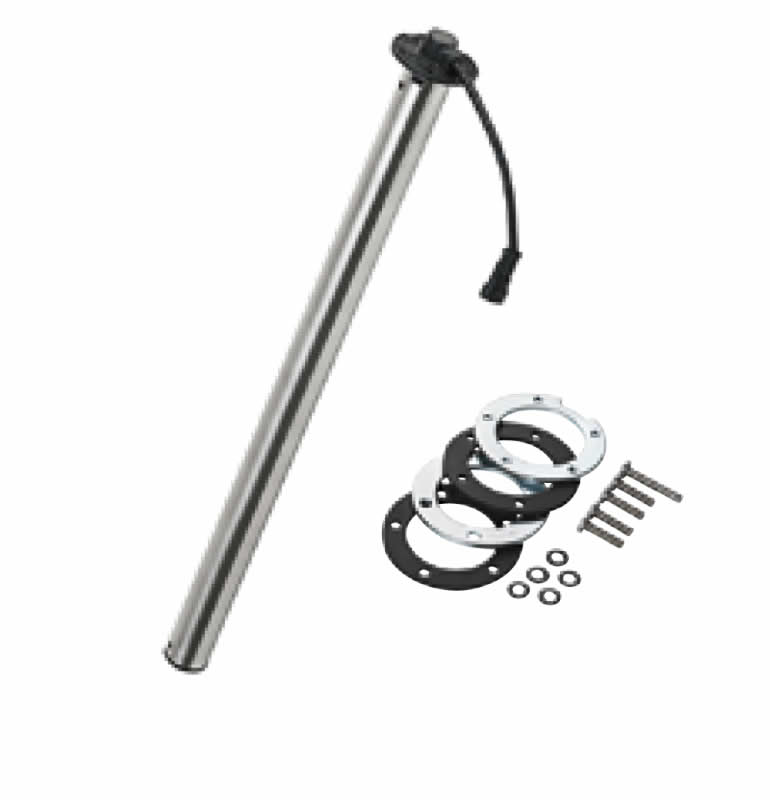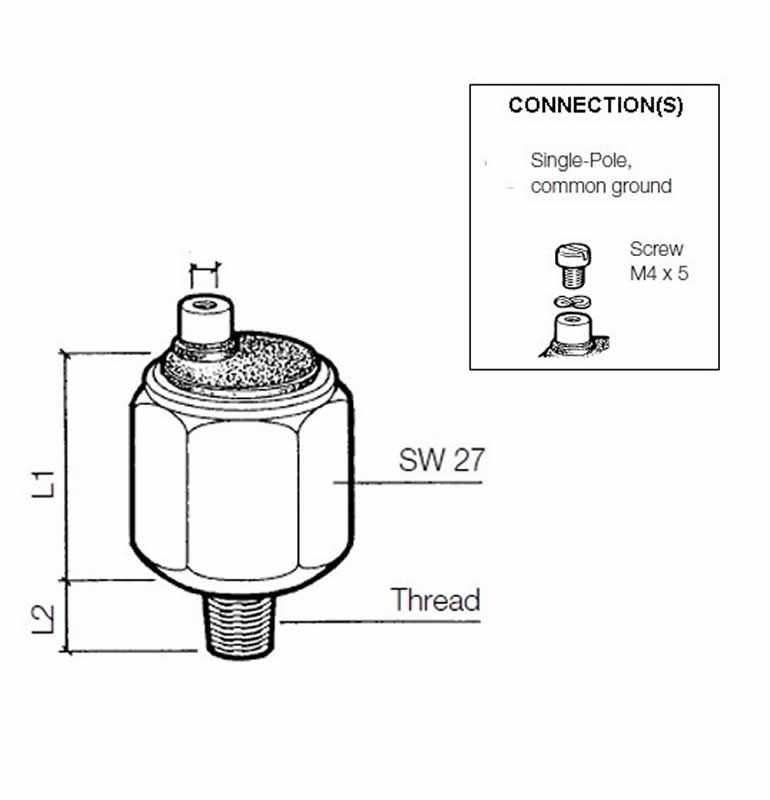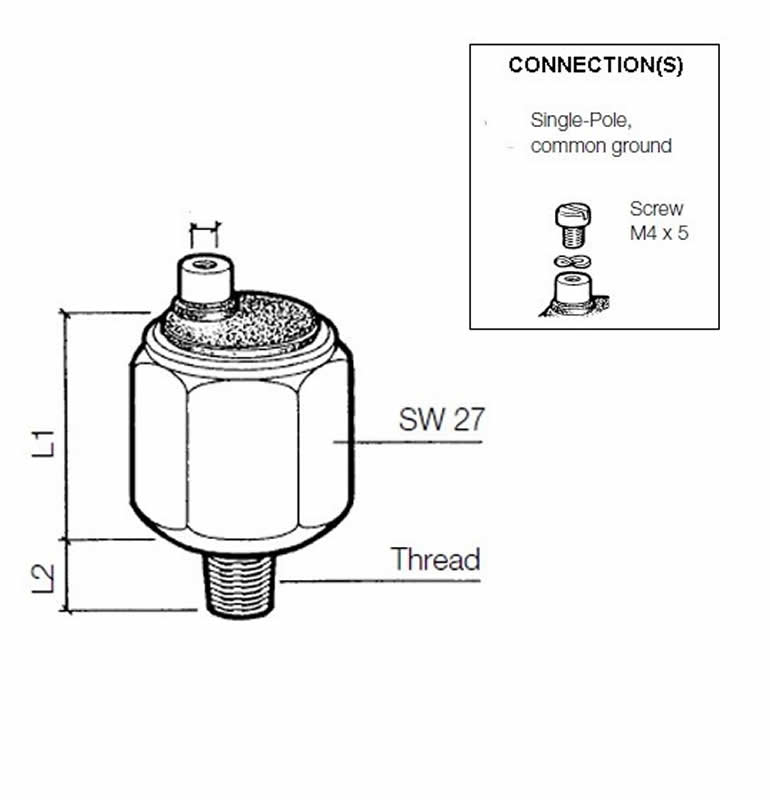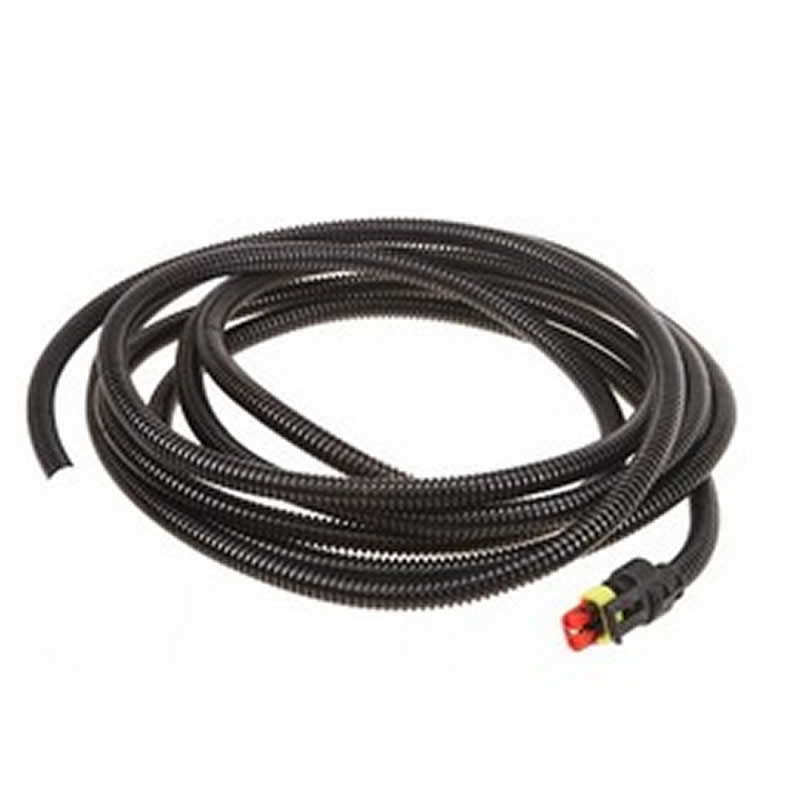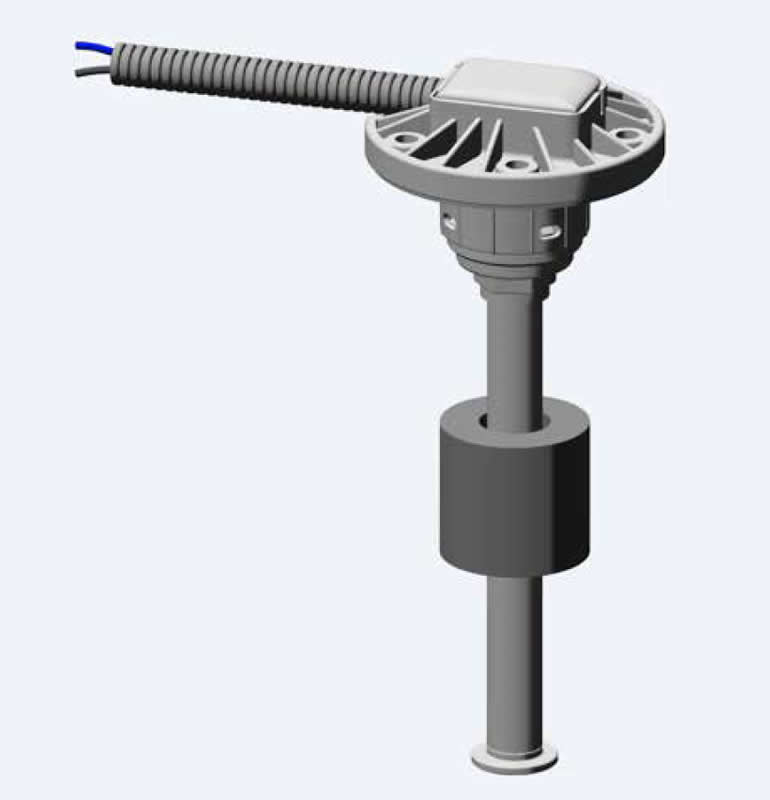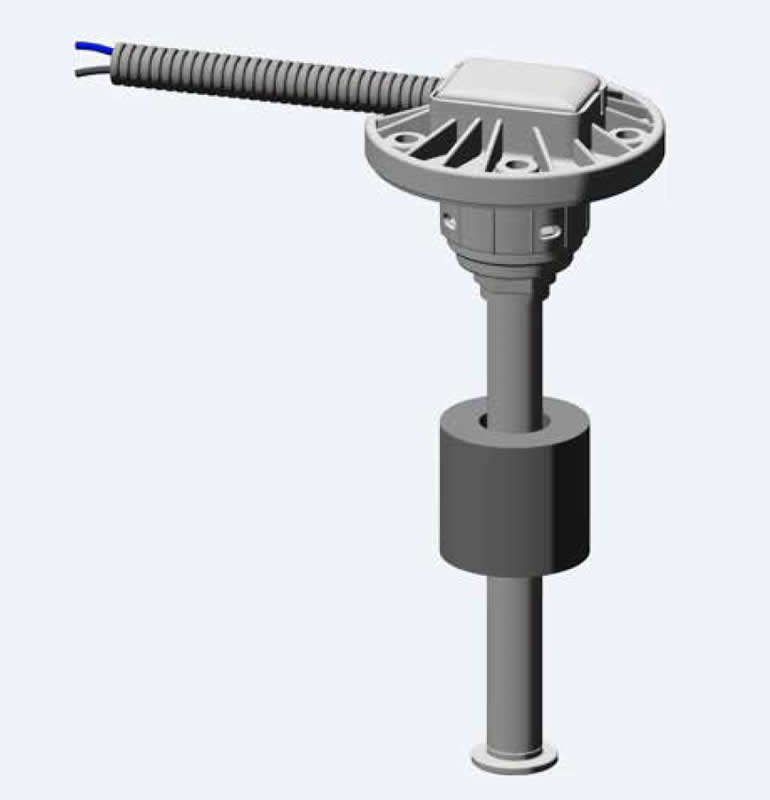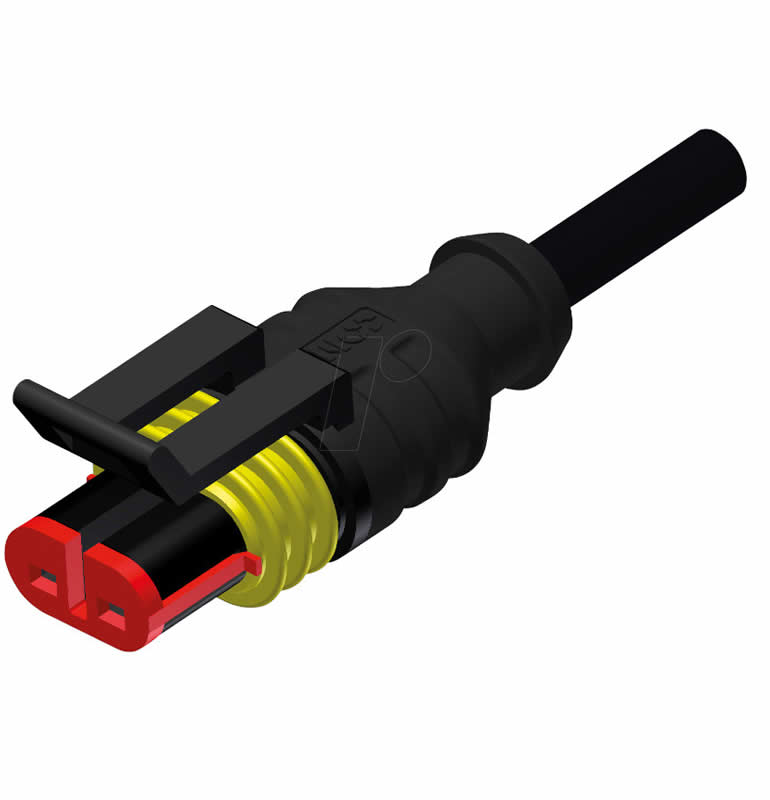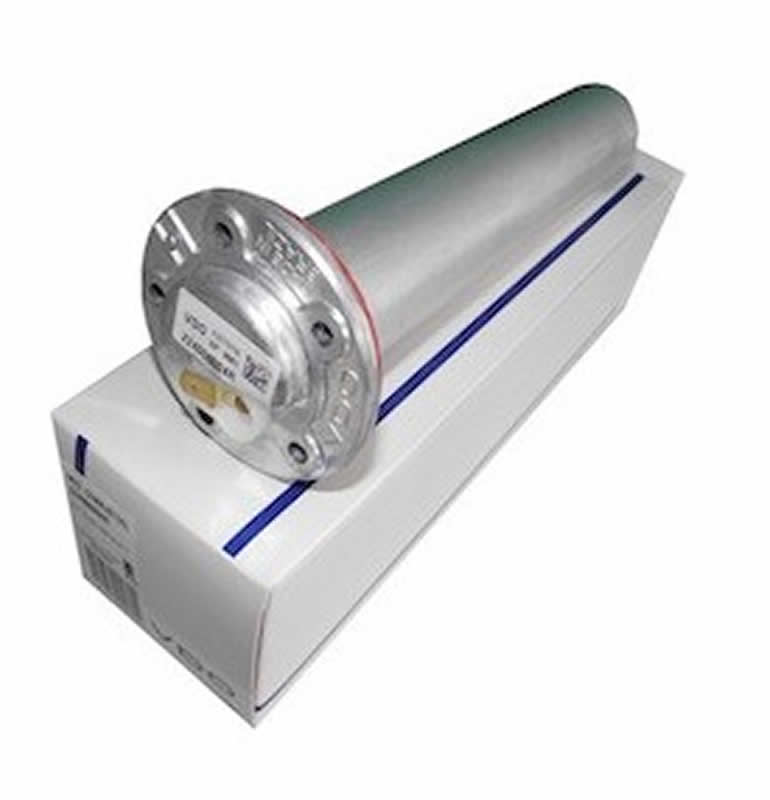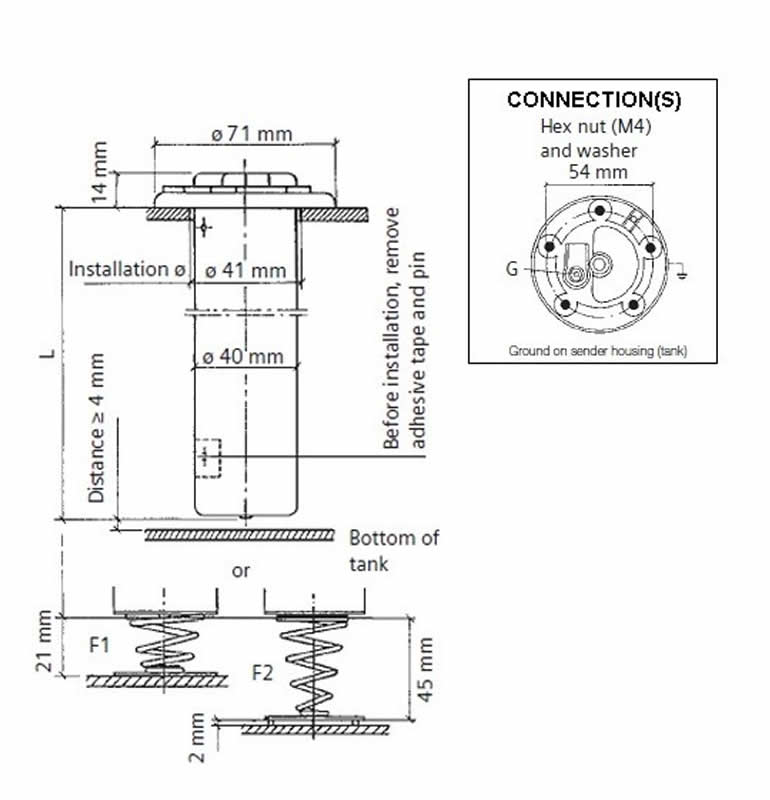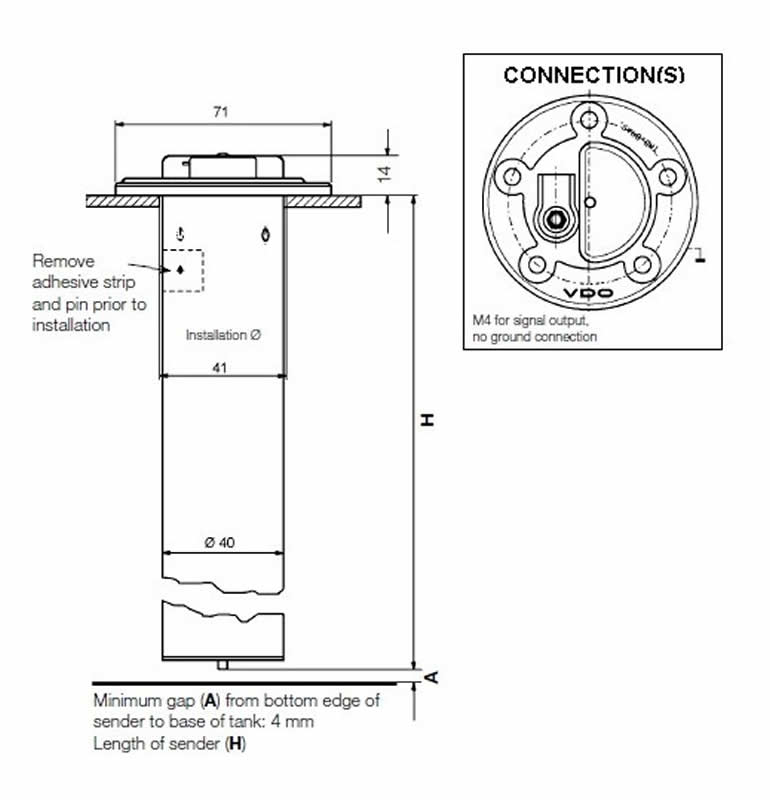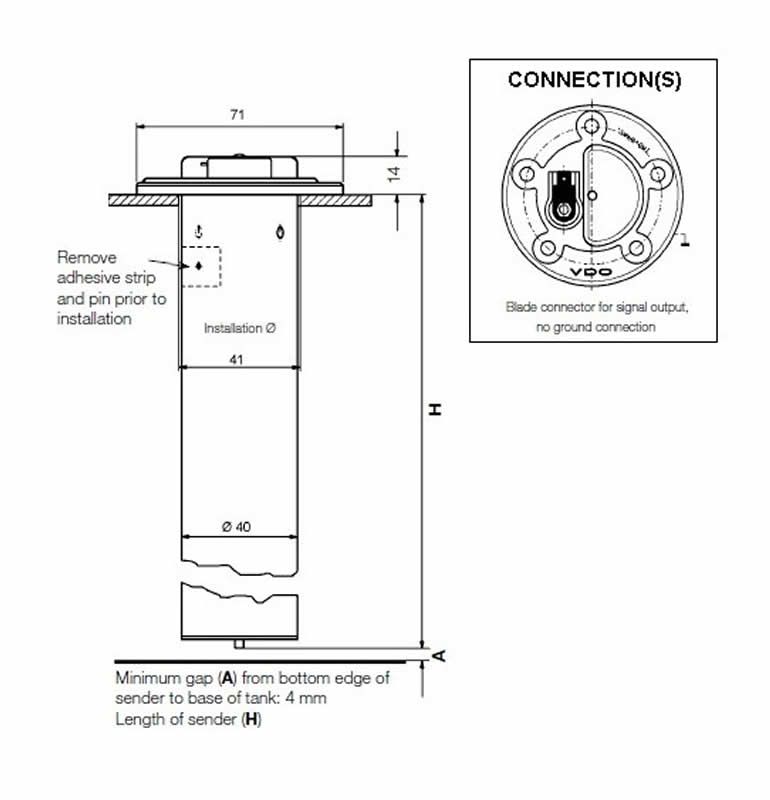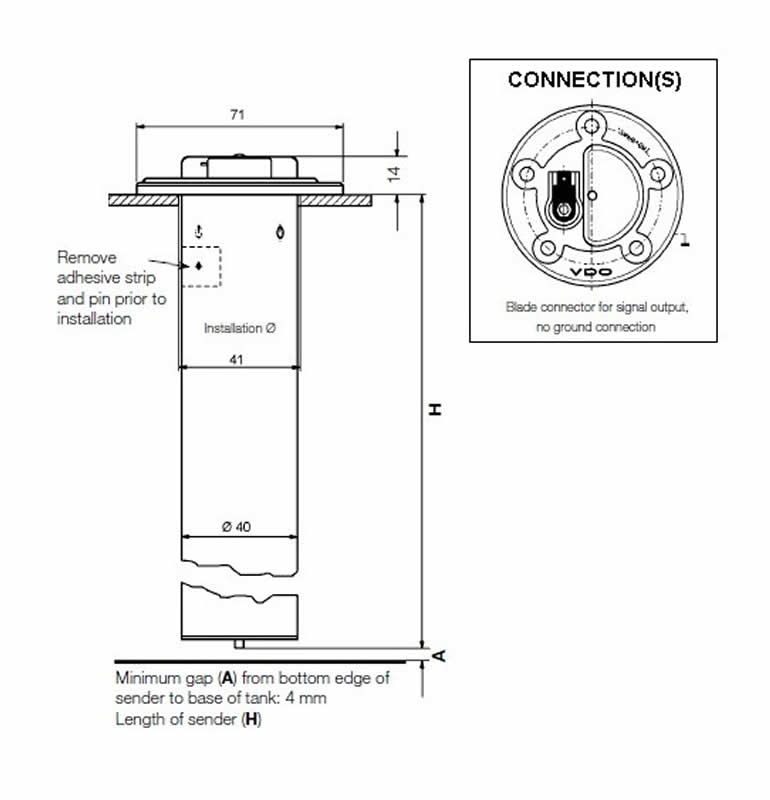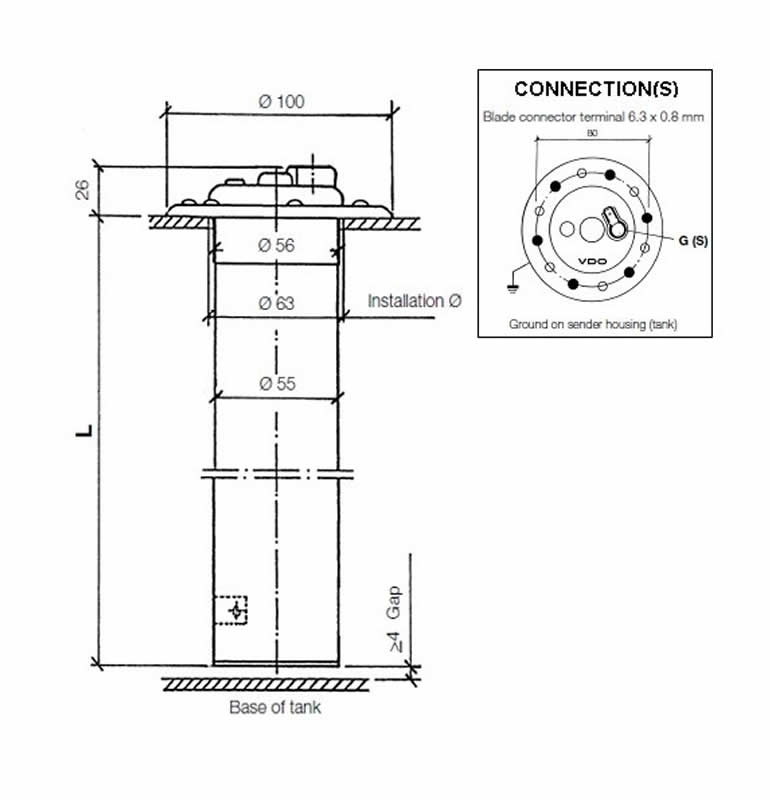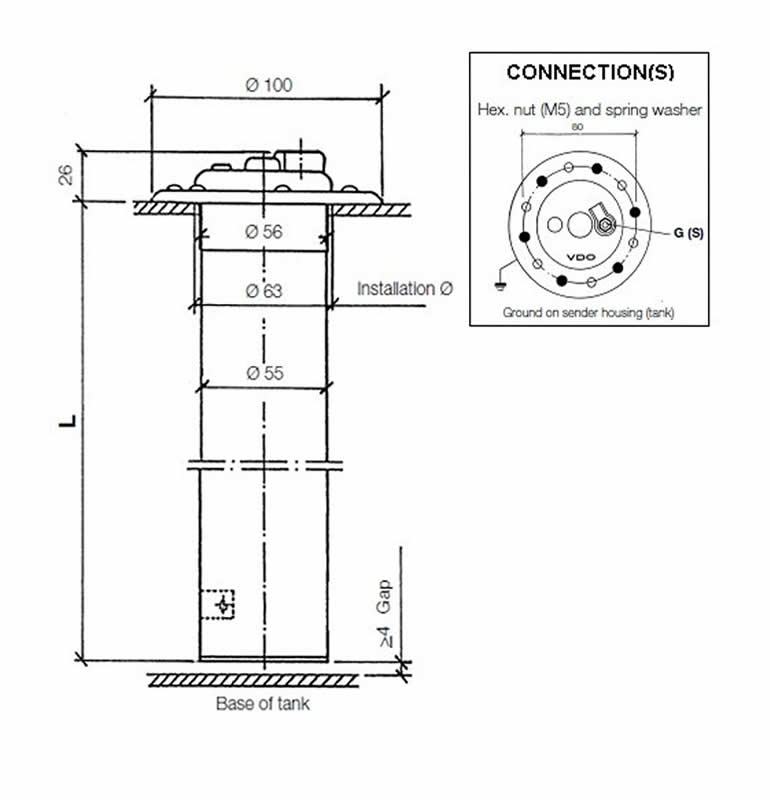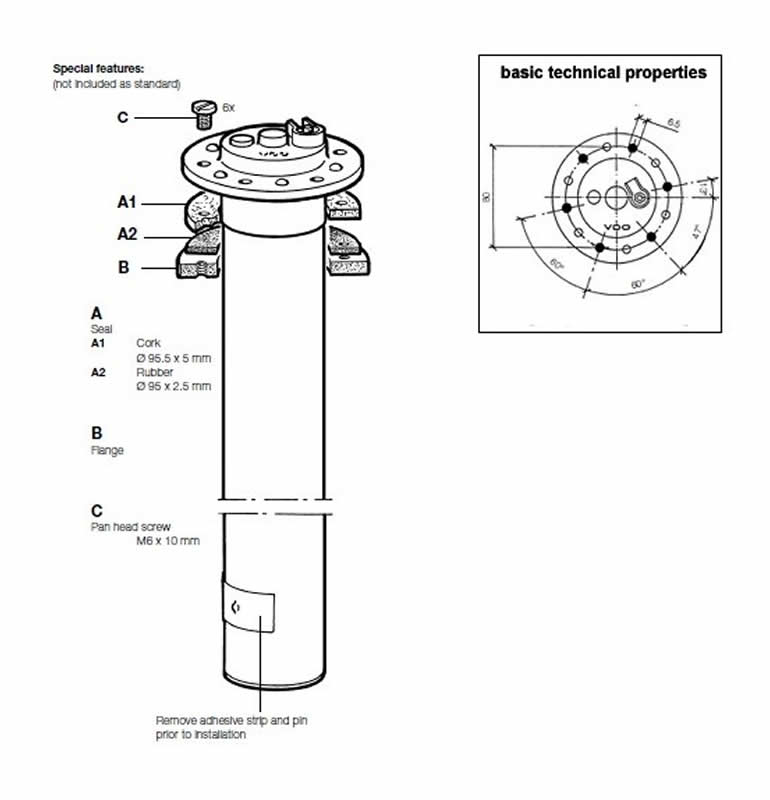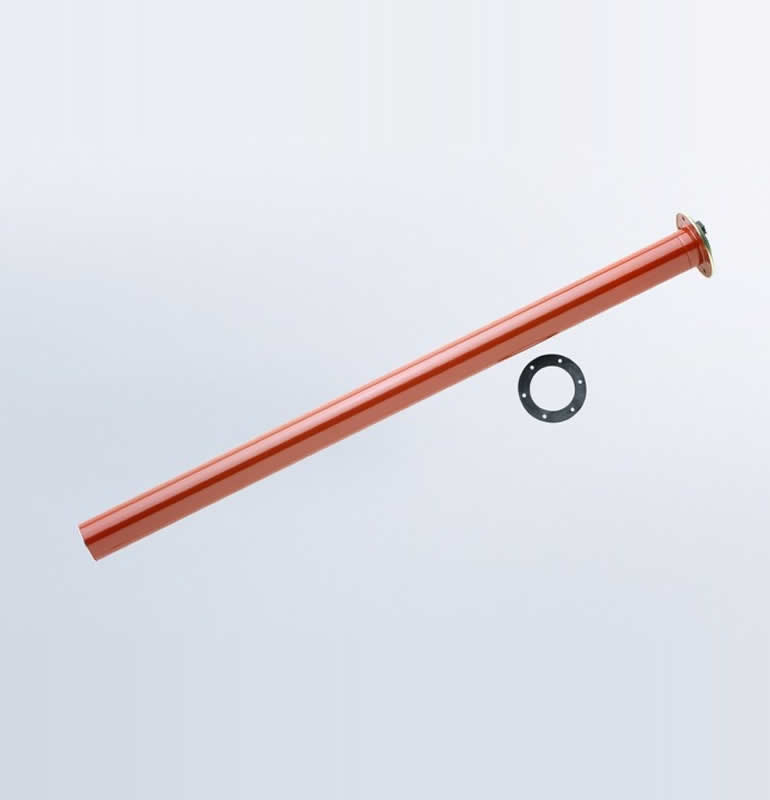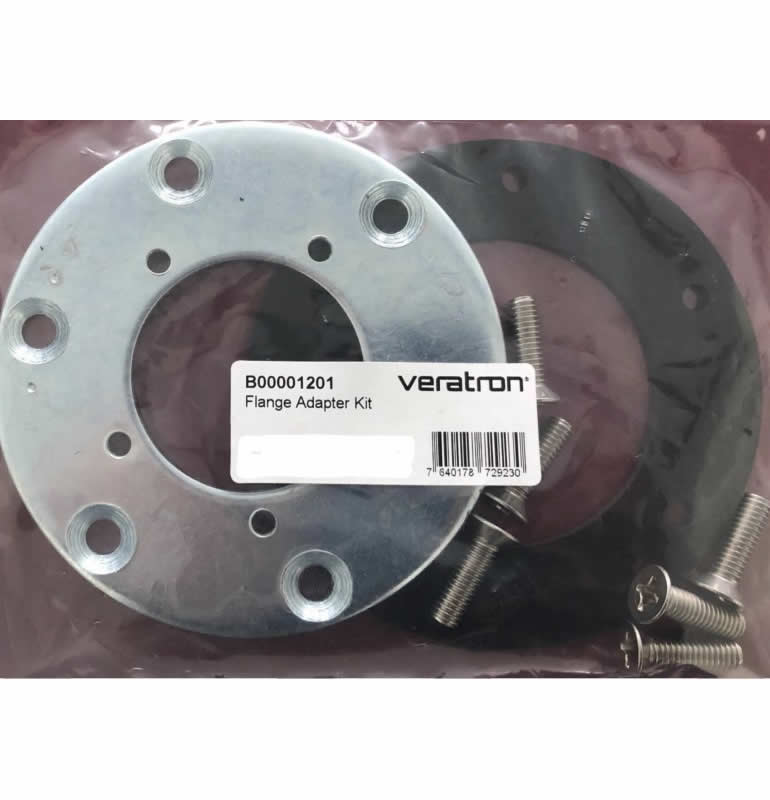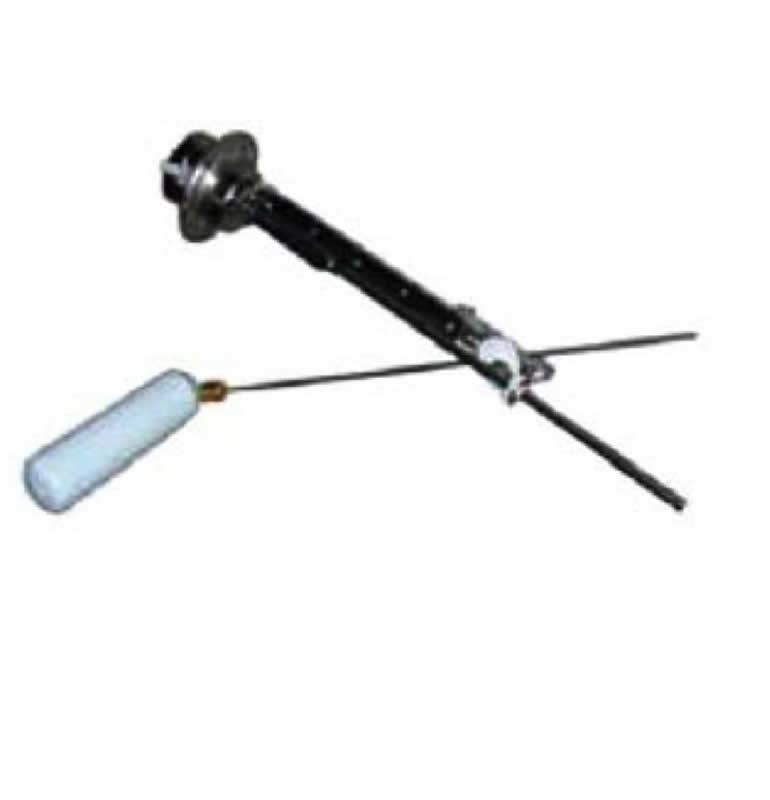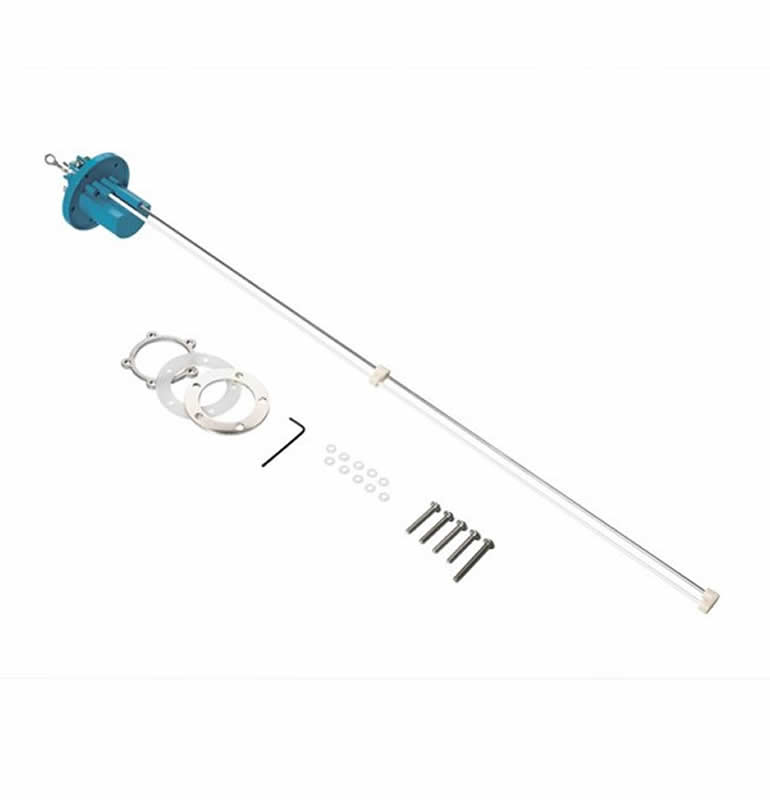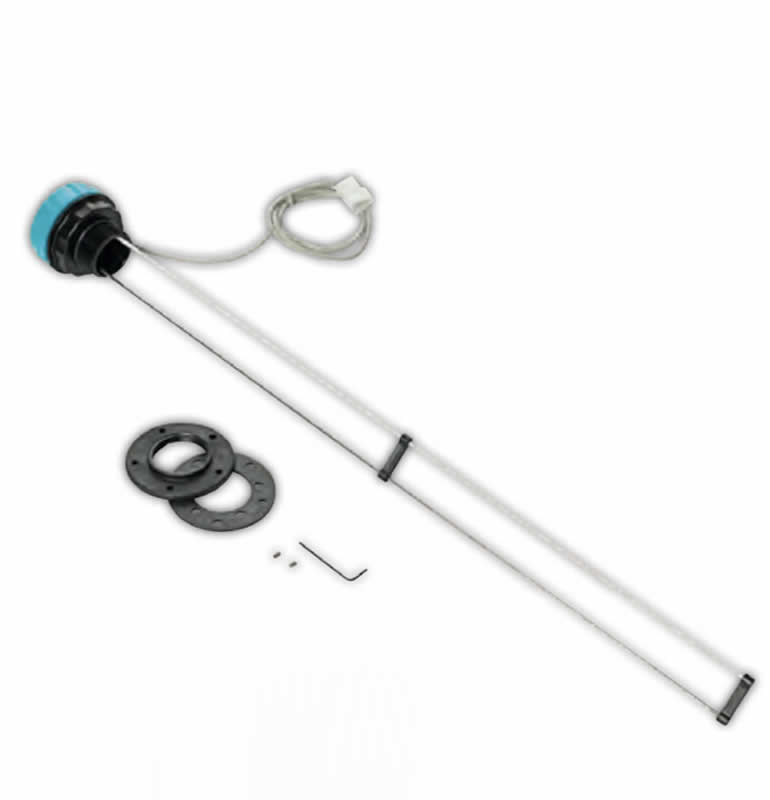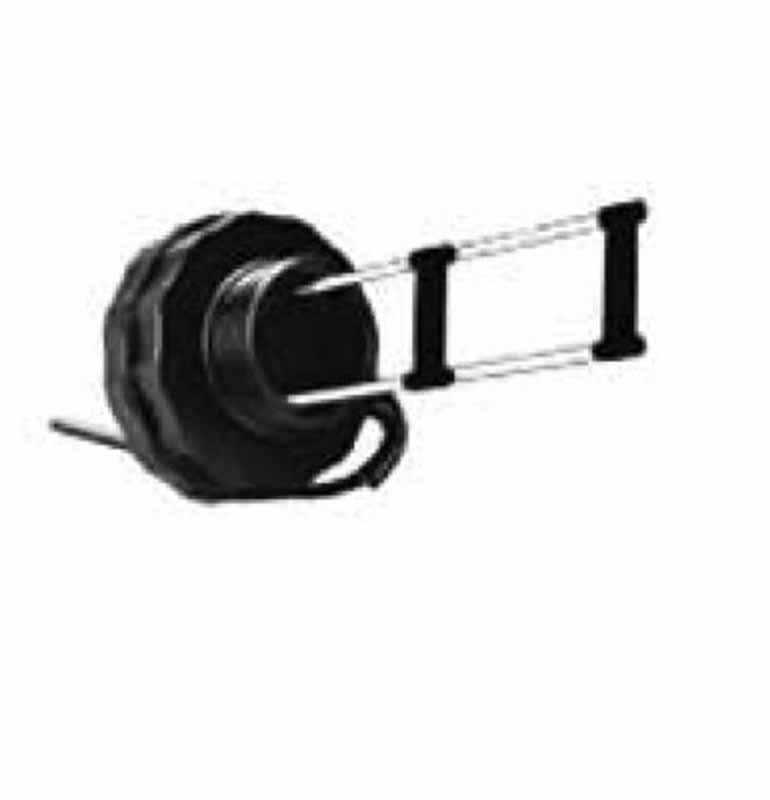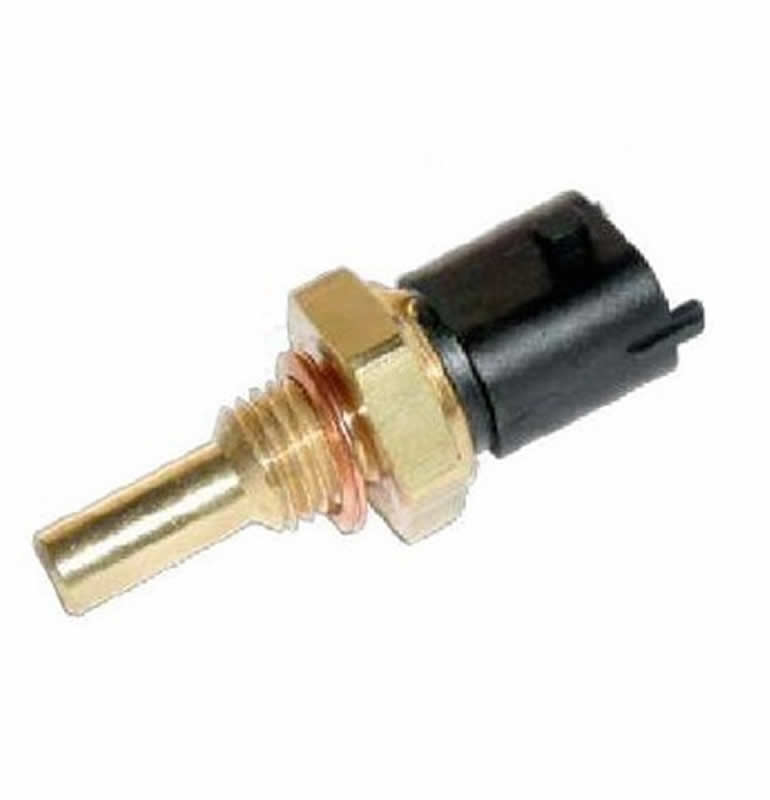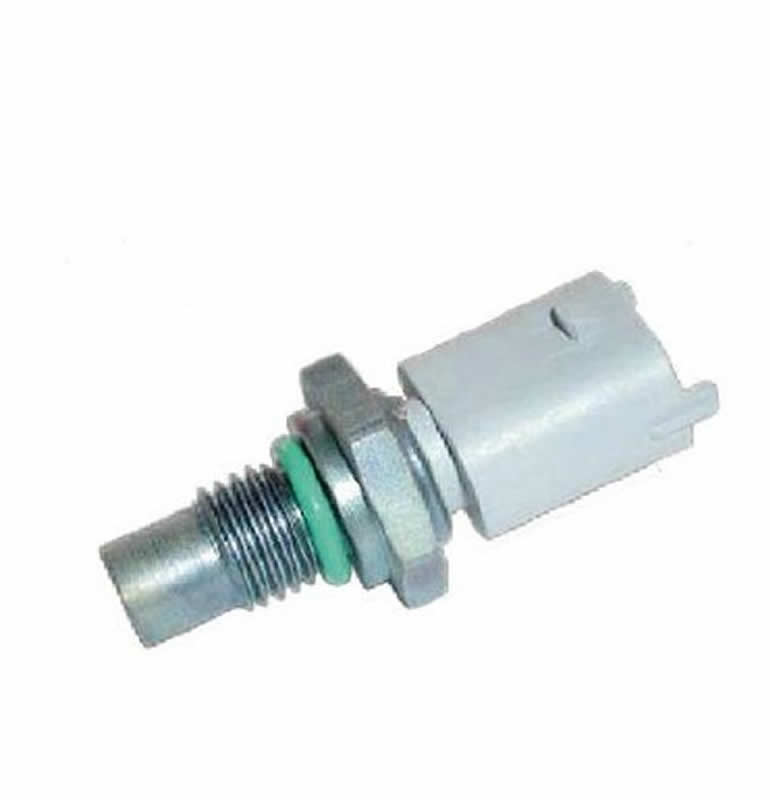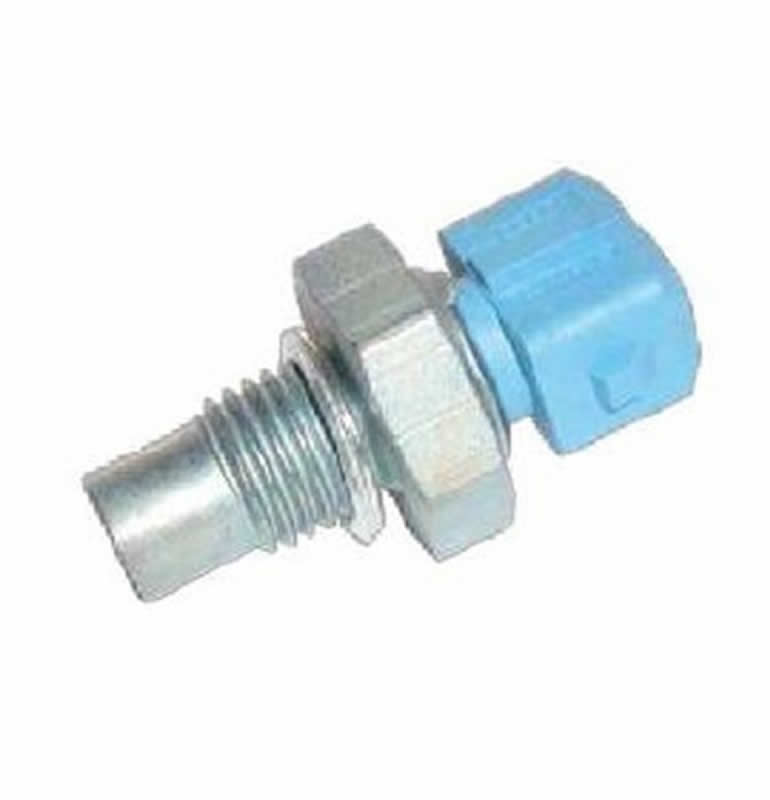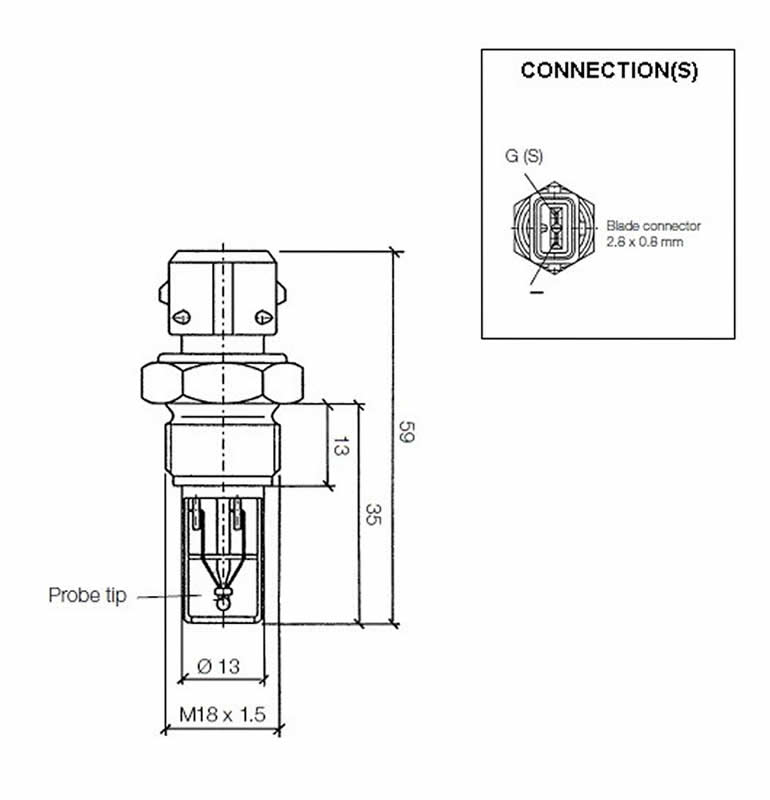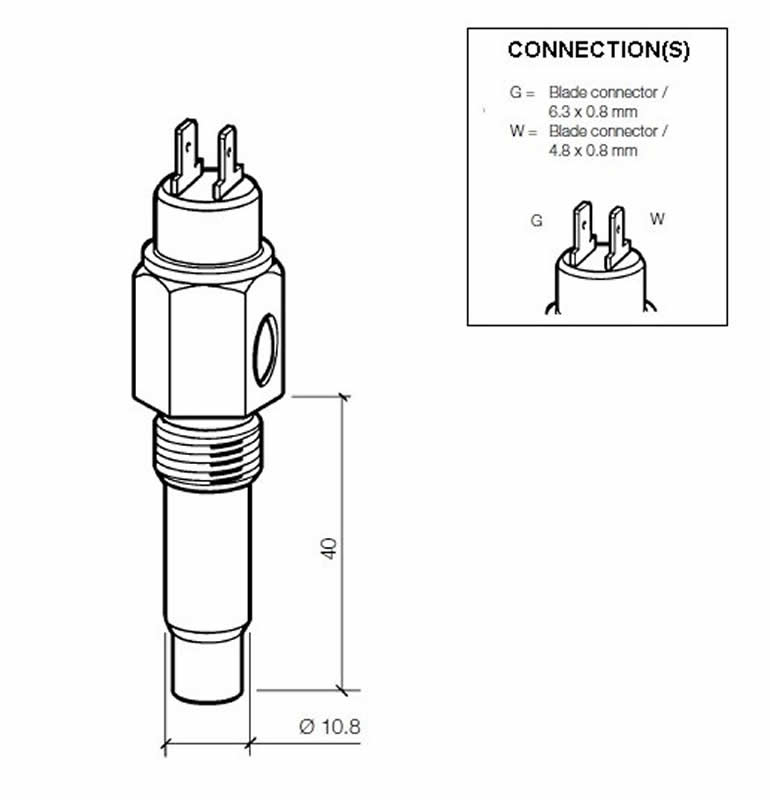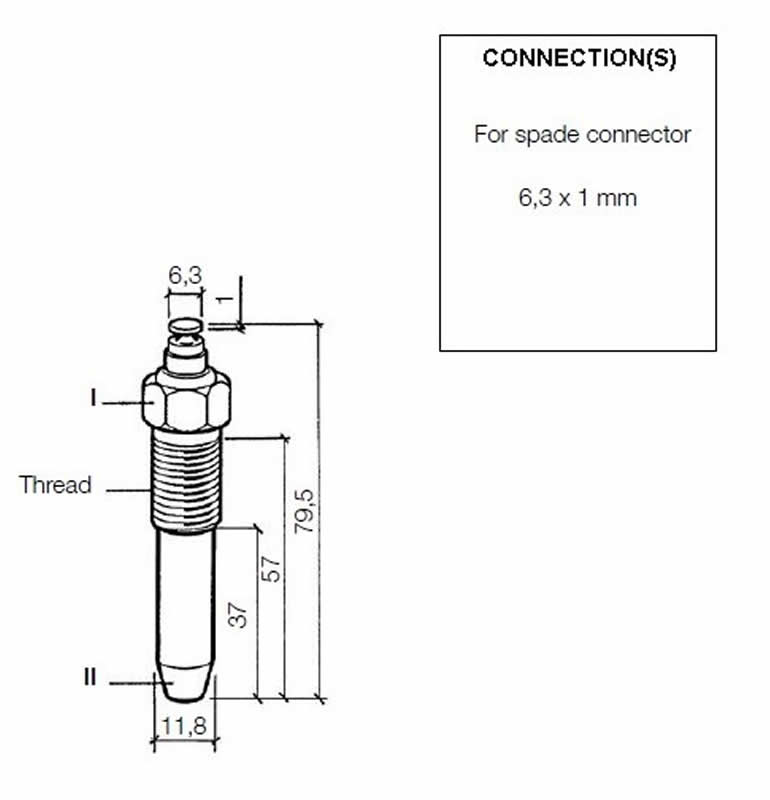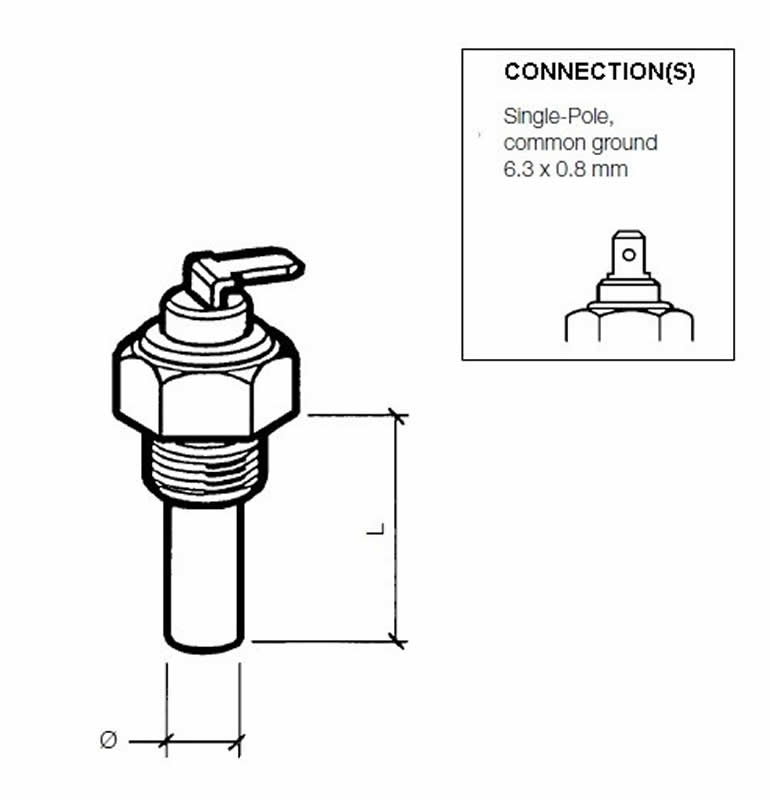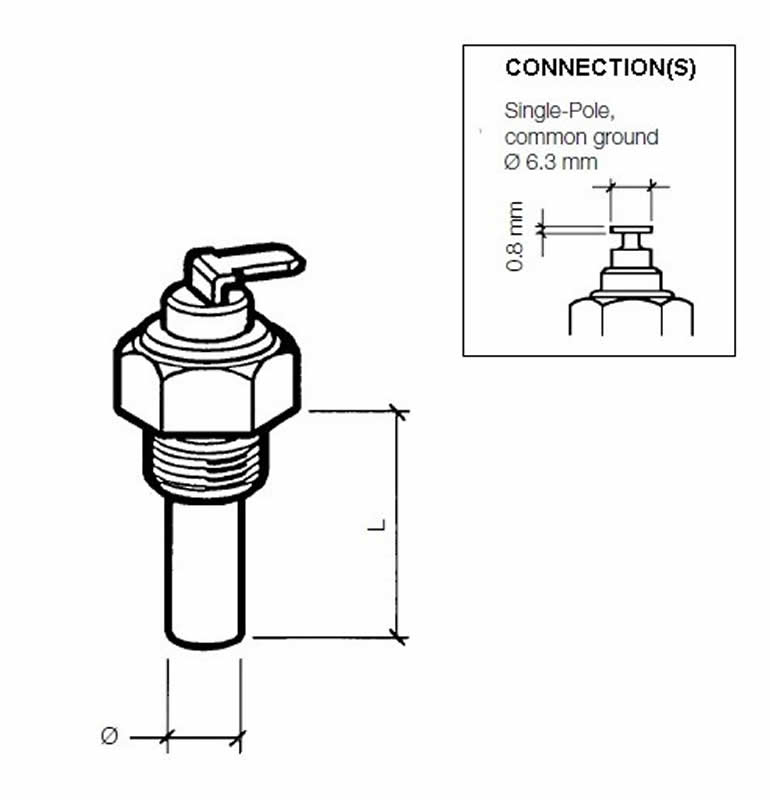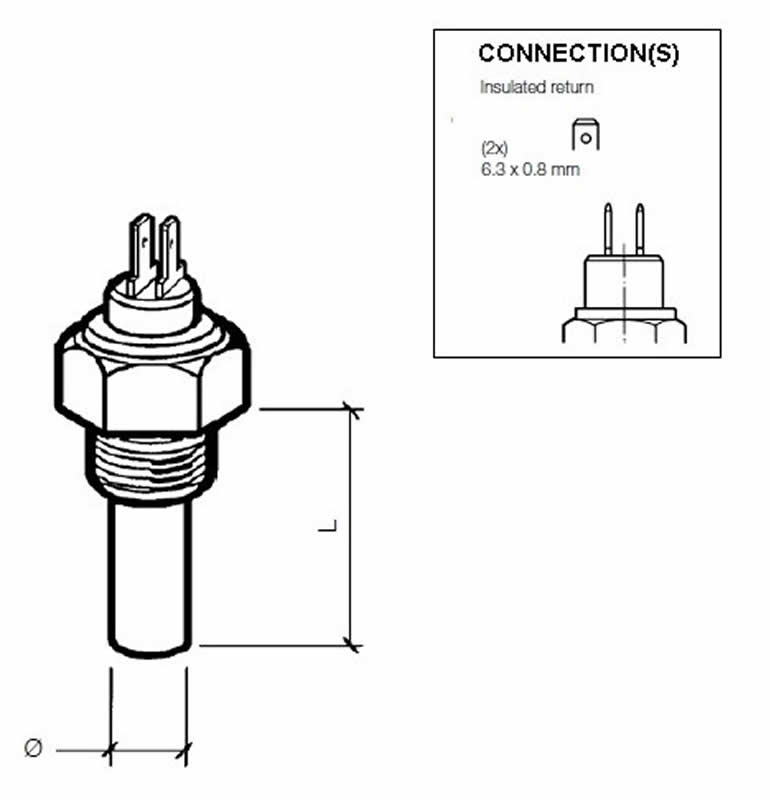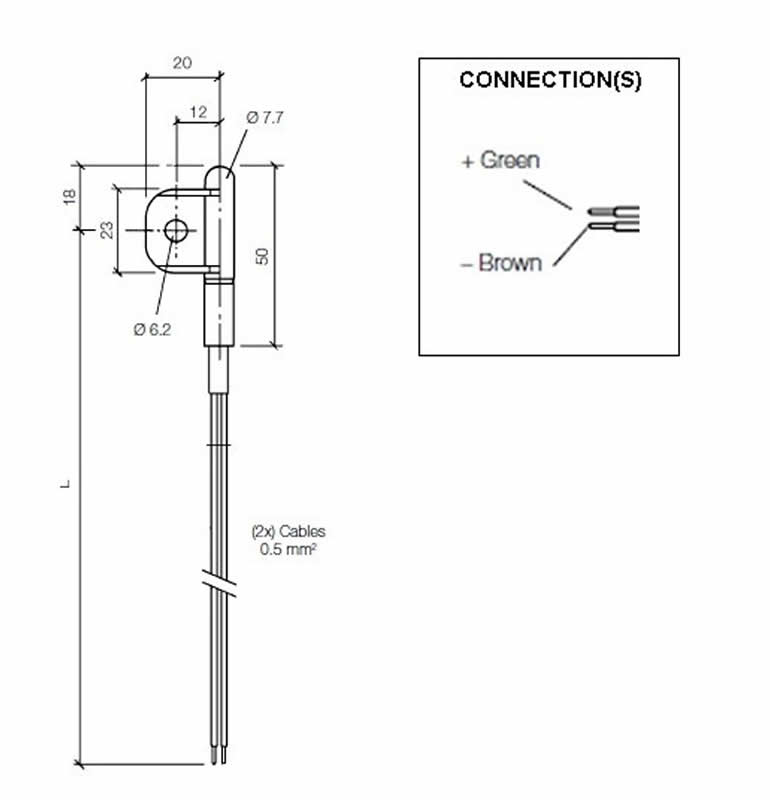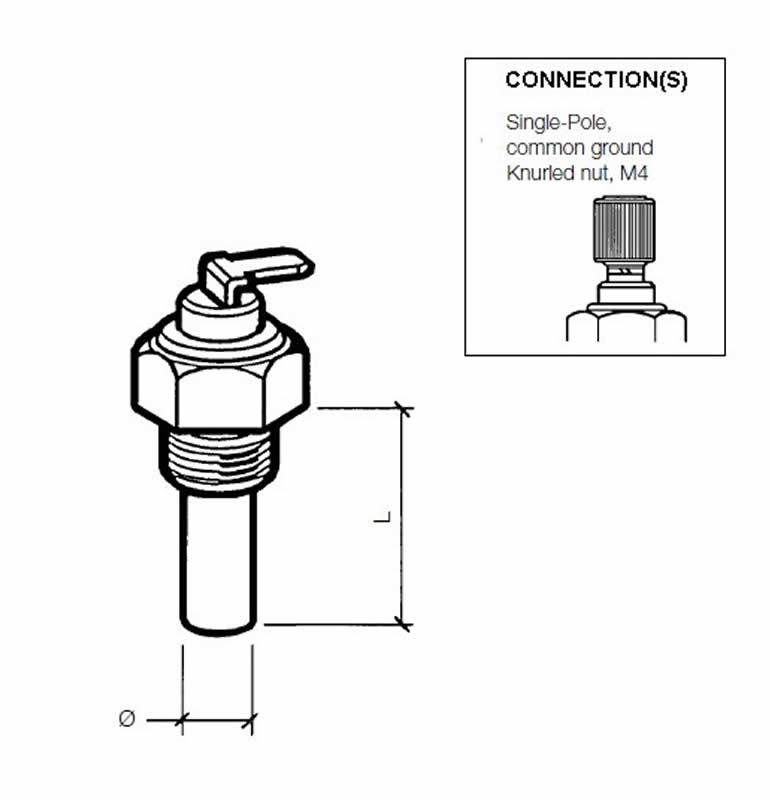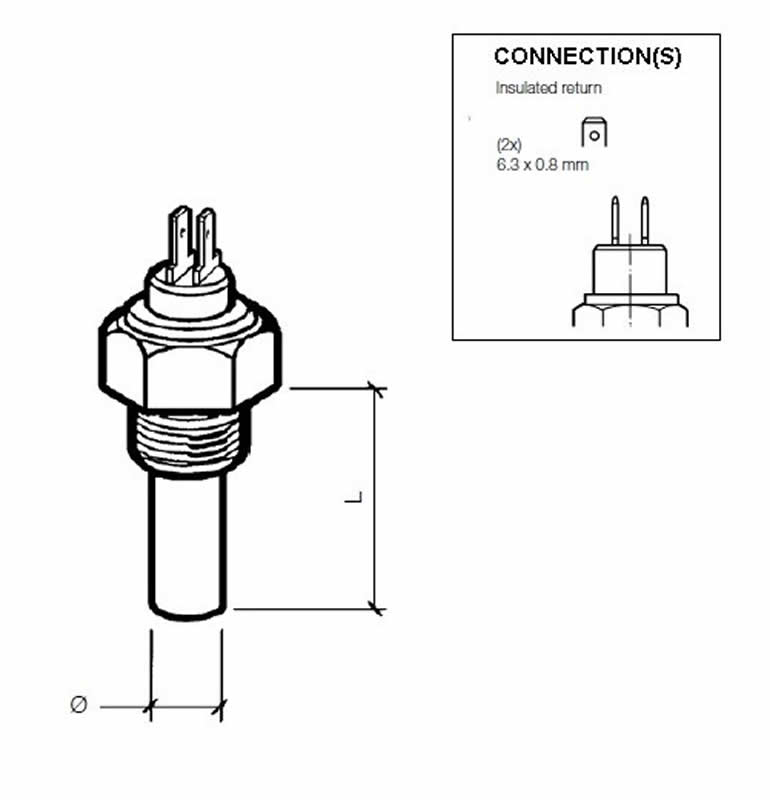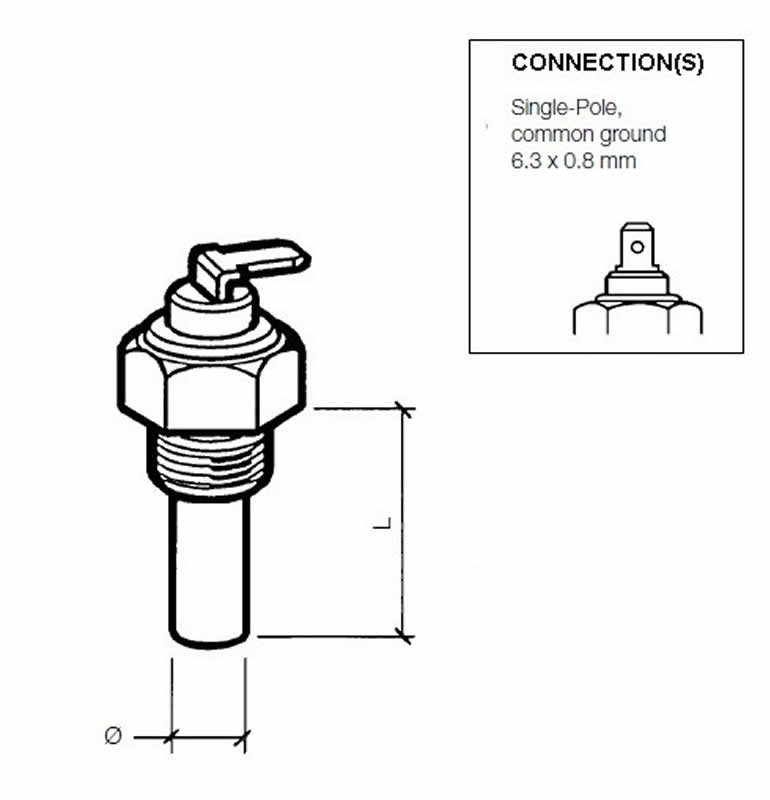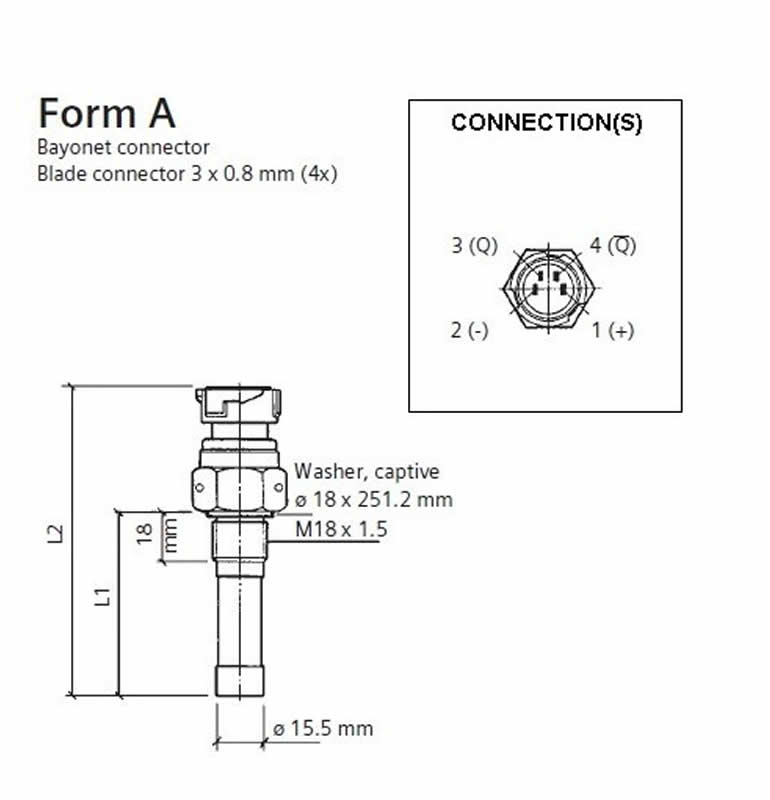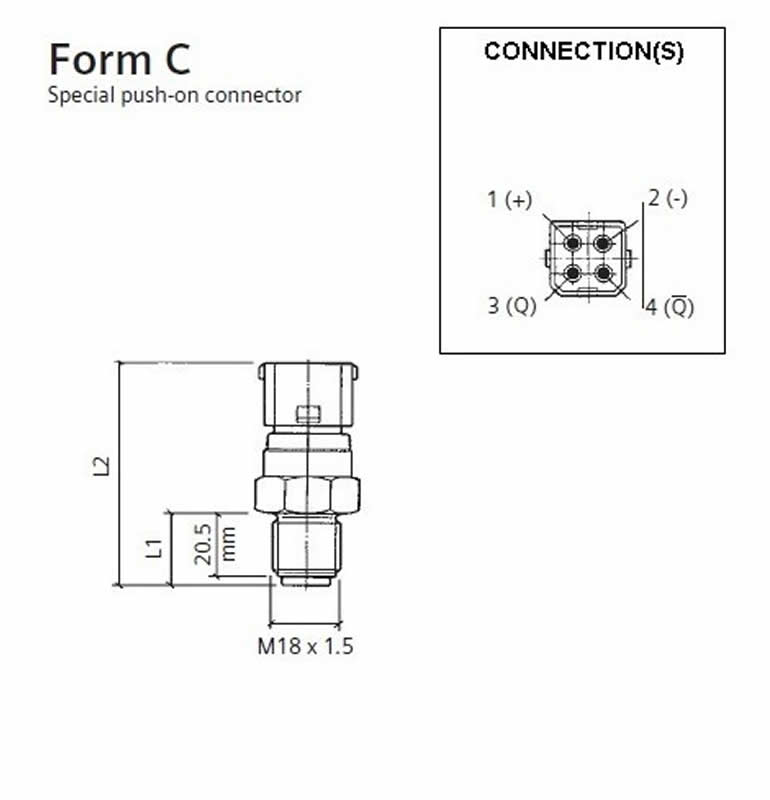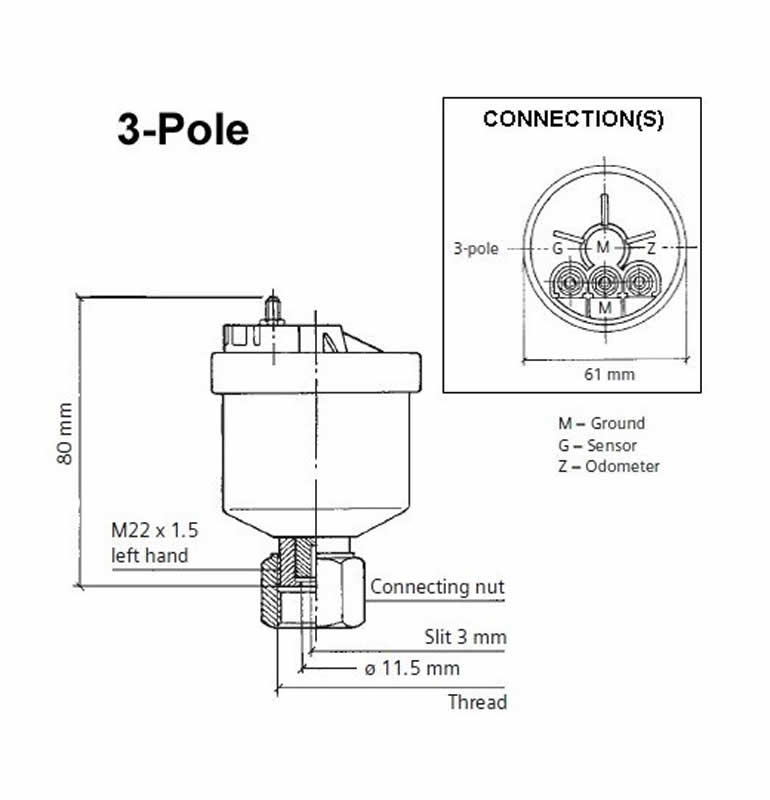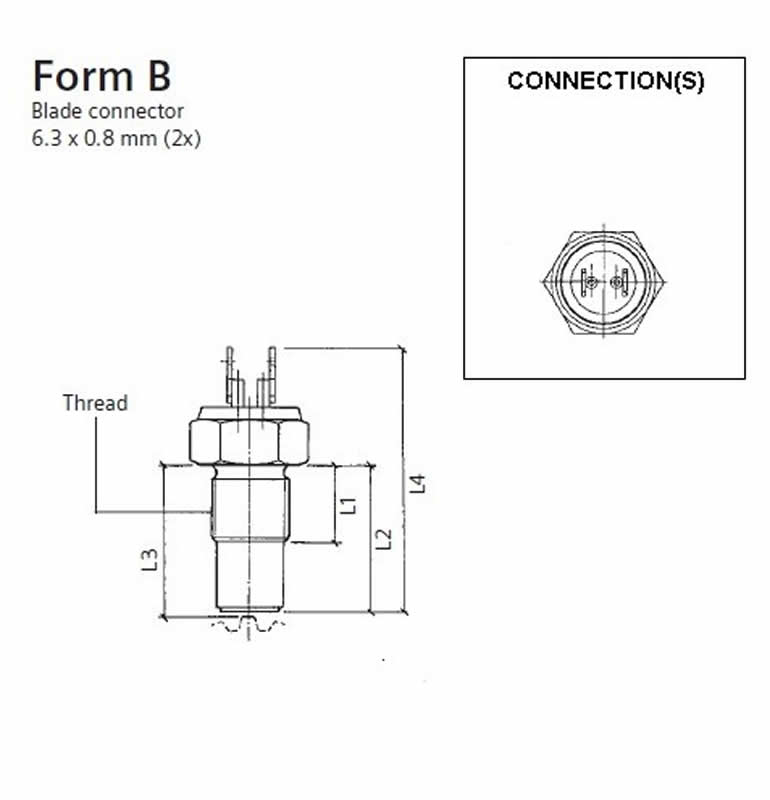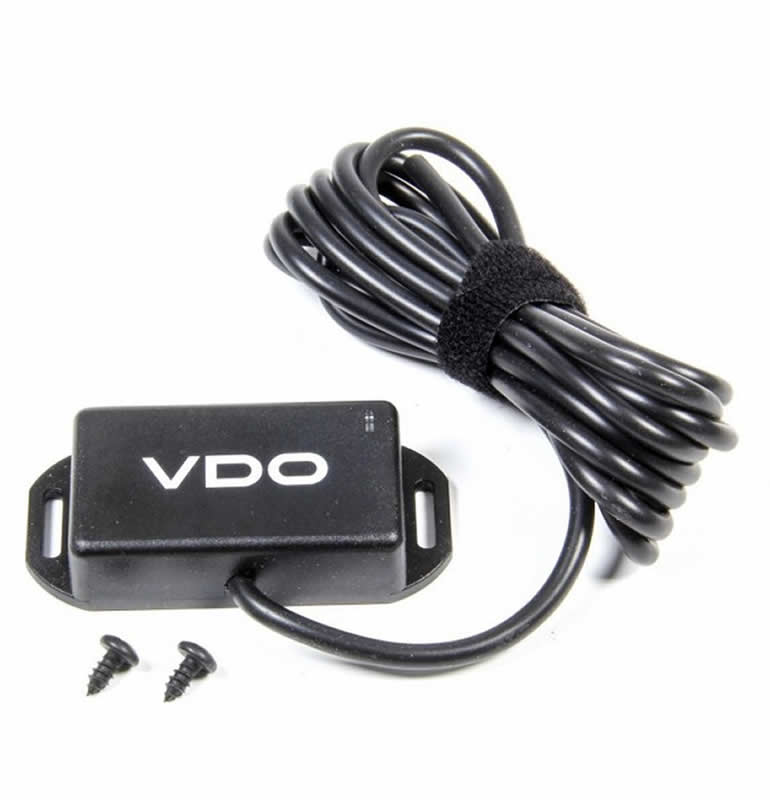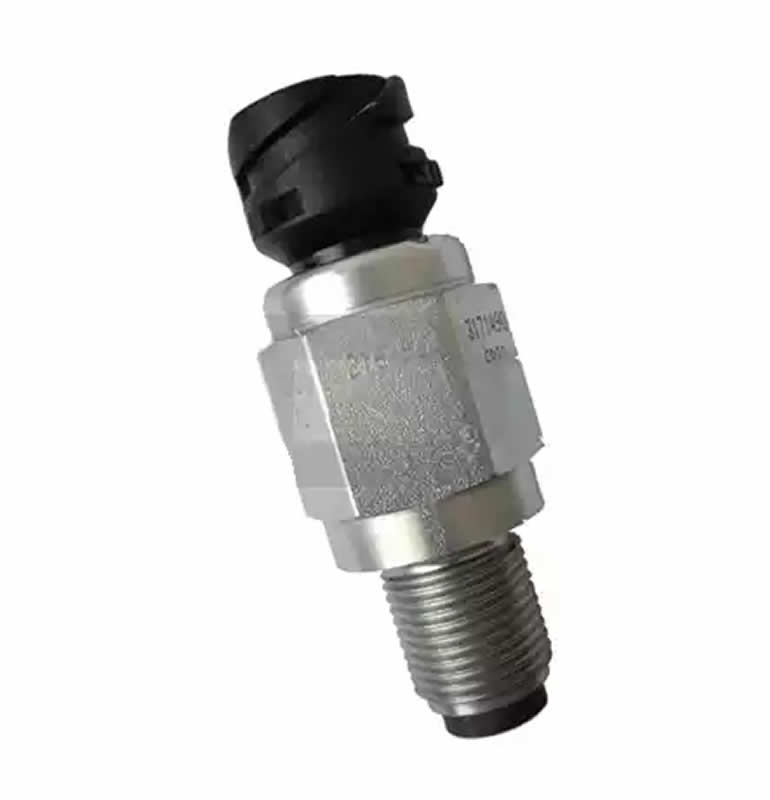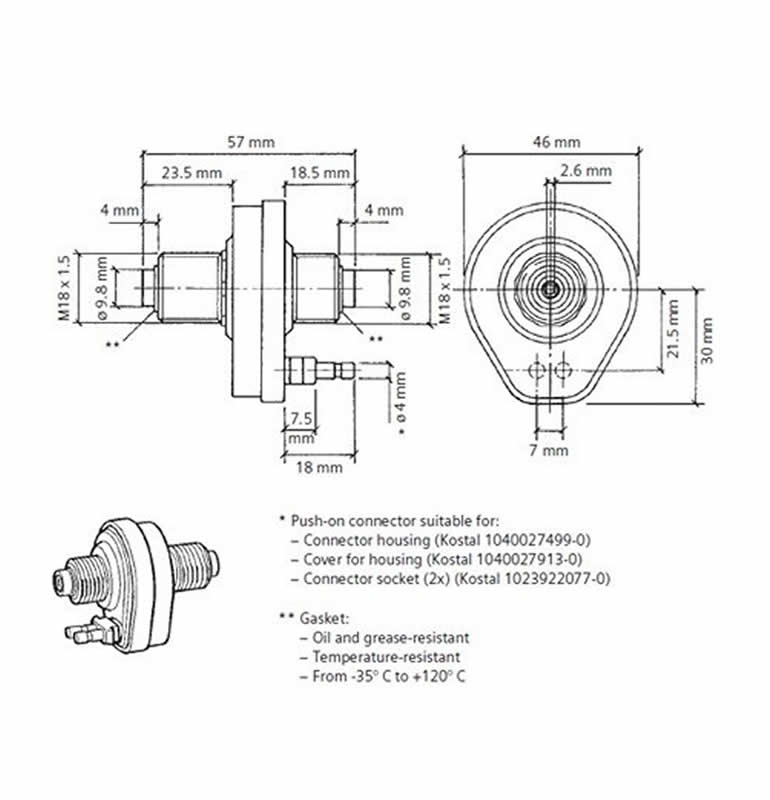Tubular Sensor Ø54mm - 1000mm - 0-180 Ohm
Tubular Sensor 0-180 Ohm
The Tubular Fuel Level Sensor with a Ø54mm diameter, 1000mm length, and 0-180 Ohm resistance is designed for accurate fuel level measurement. It is often used in automotive, marine, and industrial applications.
Specifications
Tubular sensor stainless steel
Suitable for water and fuel
Tube length: 1.000mm - Ø38mm
5-hole SAE Flange 54 mm PA66 GF30
Contactless - Empty-Full: 0-180 Ohm
Insulated return - IP67 2-Pole connector
1. Compatibility
- Gauges: This sensor is compatible with fuel gauges that support a 0-180 Ohm resistance range. Most common types are VDO or other similar brands that offer analog or digital fuel gauges.
- Applications: It is suitable for a variety of vehicles and systems, including:
- Automotive (cars, trucks, buses)
- Marine (boats, yachts)
- Industrial machinery
- Agricultural vehicles
- Fuel Types: Compatible with gasoline, diesel, biodiesel, and other fuel types, depending on the material of construction.
2. Installation
- Mounting: The sensor is typically mounted inside the fuel tank, secured with screws or a flange.
- Electrical Connection:
- One end of the sensor will connect to the fuel gauge, matching the 0-180 Ohm range.
- Wiring needs to be corrosion-resistant and insulated for durability, especially in marine environments.
- Calibration: The sensor might need to be calibrated to ensure accurate readings across the full range of the fuel level. Calibration involves adjusting the gauge to match the sensor’s Ohm readings for an empty and full tank.
- Immersion: It should be fully submerged in the fuel for proper operation. Make sure the sensor length (1000mm) is suitable for the depth of the fuel tank.
3. Specifications
- Diameter: Ø54mm, suitable for various tank sizes.
- Length: 1000mm, designed for deeper fuel tanks, but can be custom-cut or adjusted based on specific tank dimensions.
- Resistance Range: 0-180 Ohm (empty to full).
- Material: Typically stainless steel or other corrosion-resistant materials to withstand harsh fuel environments.
- Operating Temperature: Usually designed to handle a wide temperature range, typically from -40°C to +85°C, depending on the specific model.
4. Additional Features
- Vibration Resistance: Engineered to withstand vibration from moving vehicles, ideal for boats or trucks.
- Sealing: Often includes O-rings or gaskets for sealing the installation port to prevent fuel leakage.
- Waterproofing: IP67 or higher rating ensures protection against water and fuel intrusion.
 Autem ipsa ad 1 x $145.80
Autem ipsa ad 1 x $145.80 Tenetur illum amet 1 x $150.80
Tenetur illum amet 1 x $150.80 Non doloremque placeat 1 x $165.80
Non doloremque placeat 1 x $165.80
